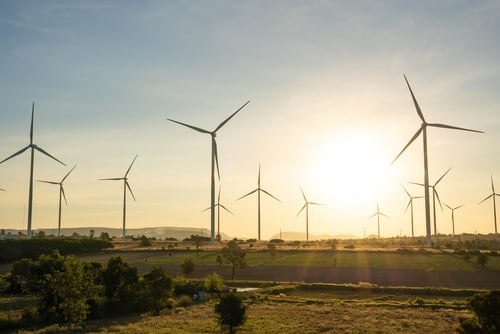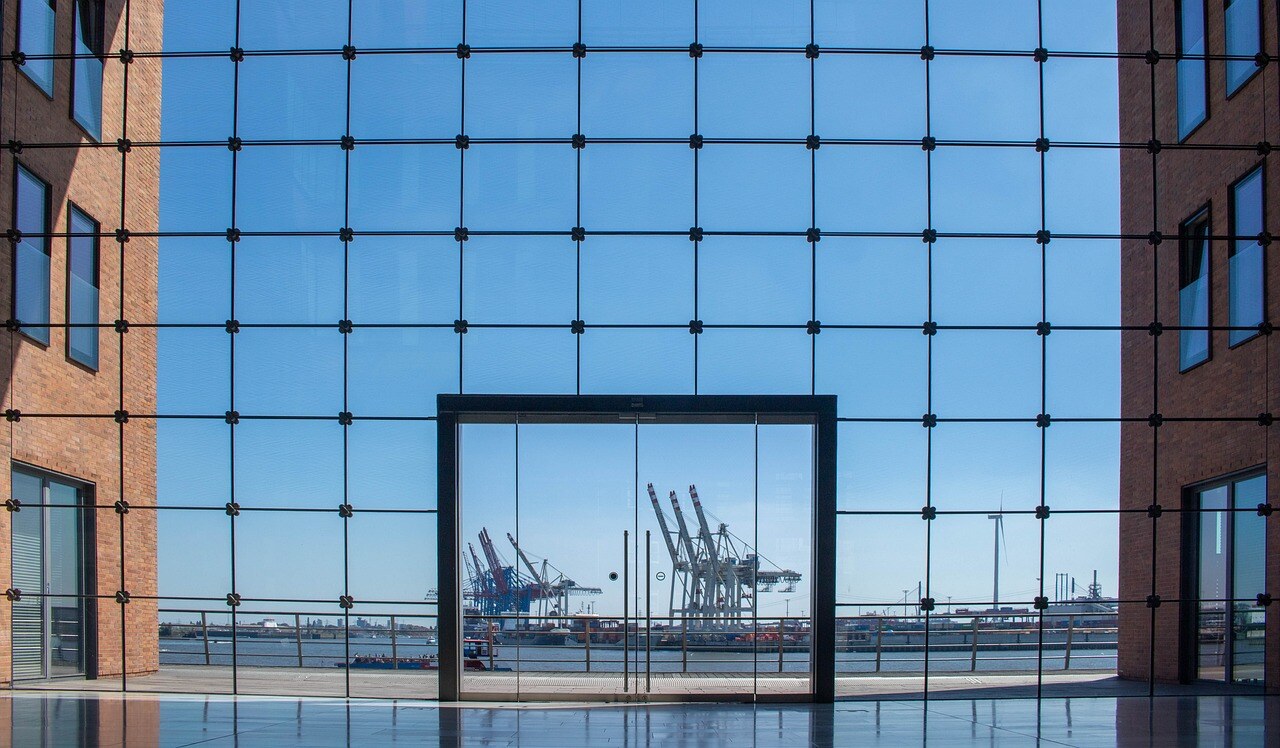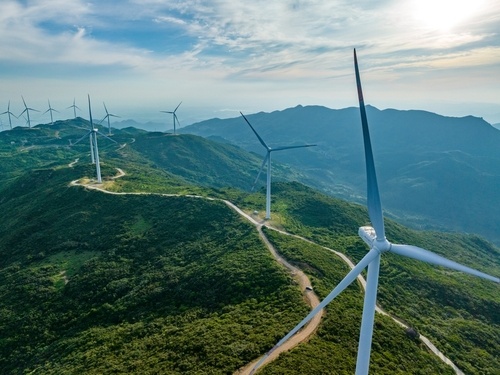Hosted by our Energy Risk Manager, Alexandra Mottershead, who was joined by Market Analyst & Energy Trader, Jitesh Panchal. They breakdown and analyse the factors impacting the global energy markets while highlighting some of the key fundamental drivers to monitor in the near future.
PRICING DYNAMICS
Here we have a chart showing the evolution of seasonal Gas and Power contract prices. It’s been over 19 months since the peak of the European energy crisis and prices have retreated with the first instance of declines happening in the first half of 2023 due to a mild winter, high gas storage levels and a weak global demand picture which were echoed in the next leg down from early October where the Win-24 contract depreciated by ~53% over the period. High levels of volatility continue to remain a theme and more recently there has been a notable uptick of around 24% since the start of the summer season. This has been linked to some supply-side factors, improved Asian demand for LNG, a rally in coal and carbon prices alongside geopolitical risk premium. The current structure of the price curve is known as backwardation, whereby near curve contracts are priced higher than those further out which means risk is held near term until late 2025 as the market anticipates a new wave of LNG supply.
The electricity market is directly correlated to gas prices with general price declines also linked to the structural reduction in intrinsic value of LNG contracts and improved nuclear output from the UK and France creating healthier supply margins. The inelastic nature of supply and demand continues to create sporadic market liquidity which is underpinning volatility and impacting appetite for forward hedging. This could be linked to the price resistance from clean spark spreads which is a measurement of profitability for gas-fired-power stations that have consistently been in negative territory.
DEMAND SECTION
Demand reduction is observed across Europe of around 20% since pre-crisis levels related to subdued heating requirements and industrial demand due to offshoring production. This is correlated to the UK with year-on-year consumption dropping by 11%. The largest area of demand weakness is observed in LDZ requirement which is currently 16% below the 5-year average due to above seasonal normal temperatures. Industrial demand only makes up around 3% of total UK gas consumption which is 53% below the 5-year average. In contrast gas-for-power demand has doubled since the start of the summer season which is mostly linked to wind output dropping below seasonal normal and some fluctuations in nuclear output.
Total Northwest European LNG imports since the beginning of the year account to 29.68bcm compared to 35.91bcm in the same period last year. A key reasoning behind this is due to record high gas storage levels which have reduced demand for LNG but also a greater arbitrage to Asia from a widening JKM-TTF spread creating favourable netbacks for U.S shipments.
Asian LNG prices have appreciated to its highest levels since January above the $10/MMBtu threshold. There has been active procurement from South and Southeast Asian countries following downstream investment into regasification capacity during ongoing heatwaves, together with additional spot cargo requirement from Japan and South Korea in preparation for peak-summer demand with China remaining on the sidelines.
The UK weather forecast points to above seasonal normal temperatures over the coming month which will continue to weaken LDZ demand while the latest wind forecast points to high volatility but mostly keeping below seasonal normal. The weakening El Nino is likely to reach neutral within the next month which will coincide with Panama’s rainy season. This should continue to increase Gatun Lake levels that feed into the Panama Canal which is a key shipping route for the U.S into Asia. The NOAA currently forecast a 69% chance of El Nino conditions emerging between July and September. El Nino conditions can be associated with increased risk of cold snaps during the Northern hemisphere’s autumn/winter.
SUPPLY
Gas supplies into Europe remained strong through out the Northern Hemisphere last winter. Norwegian flows reached record highs in December 2023 and could be on track for a record year in 2024, especially given the Norwegian maintenance schedule is much lighter for 2024.
US LNG was also key in supporting the European supply picture with over 60% of US cargos heading to Europe in 2023. Drought conditions on the Panama Canal, coupled with a volatile Red Sea route, meant Europe remained the favoured destination.
Both of these factors, coupled with mild conditions, meant Europe exited the winter with record storage levels of 58%, removing significant refill pressure this summer and leading some analysts to project that the mandatory 90% fill levels in Europe could be met by August.
Despite 2024’s healthy supply picture so far, there are still several key supply risks on the horizon for Europe. Most significantly, increasing Asian LNG demand, and the associated impacts for global LNG competition and spot market flows.
An outage at the Australian Gorgon LNG facility, a major supplier into Asia, is expected to impact a third of production capacity for several weeks. The supply gap will need to be filled and this has been reflected in North Asian LNG prices recently reaching their highest levels since January. As a result, netbacks for US LNG have switched to favour Asian destinations, in contrast to the pattern observed over winter.
Looking further ahead, increased demand from developing Asian nations is likely to continue as the global macroeconomic picture improves. This will continue to influence global LNG flows and is particularly important considering Europe’s exposure to the spot LNG market is more than 50bcm. The next LNG supply wave is not expected until late-2025/ into 2026 and so increased competition with Asia for supply will keep European hub prices supported.
The 2024 Atlantic hurricane season poses potential US LNG supply risks in the coming months. Continued high ocean temperatures could make for a particularly active season and, with several major LNG production facilities situated on the US Gulf Coast, associated damage to these facilities is a significant risk.
The impact of geopolitics on energy supply has returned firmly to the spotlight in recent weeks. The EU is considering placing sanctions on Russian LNG, which made up of 16% of European LNG imports in Q1-24. The most significant proposal is a ban on re-exporting Russian LNG via Europe, a model Russia has consistently used to send its gas to Asian markets. The alternative is a longer route through the Arctic Sea requiring specialised ice-class LNG tankers, which are in short supply thanks to existing sanctions on Russia. If LNG sanctions are approved, this could remove more than 4bcm of supply into Asia before the next US and Qatari supply waves.
Finally, the 5-year gas transit agreement between Russian and Ukraine will end in the early hours of 01/01/2025, with almost no chance of renewal. Europe currently receives around 13bcm of supply via this pipeline. European companies could opt to book short-term capacity going forwards. Countries dependant on the current gas transit deal should be able to replace lost flows via LNG and other piped routes so a large price reaction is not expected, however, increased call on alternative supplies could support prices.
WIDER MARKETS
In the wider market, Brent is currently trading around 8% higher since the beginning of the year, peaking above $90/bbl in early April. Recently, the IEA trimmed its 2024 oil demand growth forecast to 1.1mbpd due to poor industrial activity and a mild winter sapping oil gas consumption particularly in Europe. While the IEA was more cautious OPEC’s report was more upbeat with a 2024 demand growth projection of 2.25mbpd. The 1.115mbpd difference is around 1% of global demand. On supply the EIA also reduced the supply growth forecast to 550,00bpd to a record 102.7mbpd, citing heavy outages in Brazil and logistical constraints in the U.S. Although the global demand economic outlook has improved since the end of last year, sticky inflation in major Western economies has pushed back expectations for central bank interest rate cuts.
Dec-24 EUA is up around 38% from the lows seen in February, however, to put this into context, prices had fallen 15% at the start of the new year. UKAs recently hit over £40/tonne for the first time since January. EUA carbon prices have been heavily correlated to gas prices in recent weeks. Rising gas prices incentivise more coal-fired generation, pushing up demand for carbon permits. In recent weeks, Commitment of Traders reports have shown investment funds decreasing their short positions on secondary EUA and UKA markets, signalling investors have become more bullish. Key areas to watch in the coming months will be potential for increasing demand, if the macroeconomic picture improves with rate cuts later in the year and, for UKAs specifically, any market reforms resulting from the forthcoming general election.






